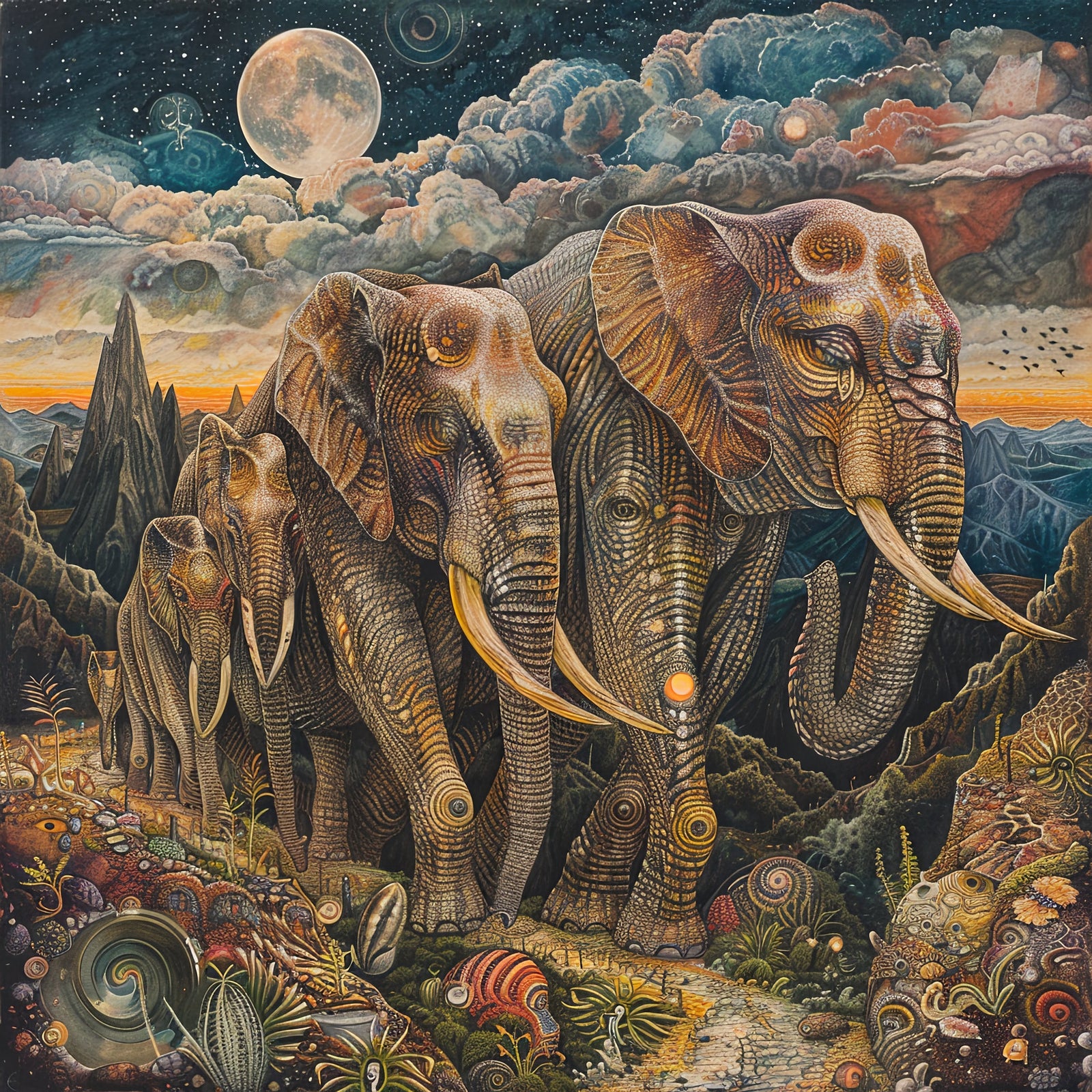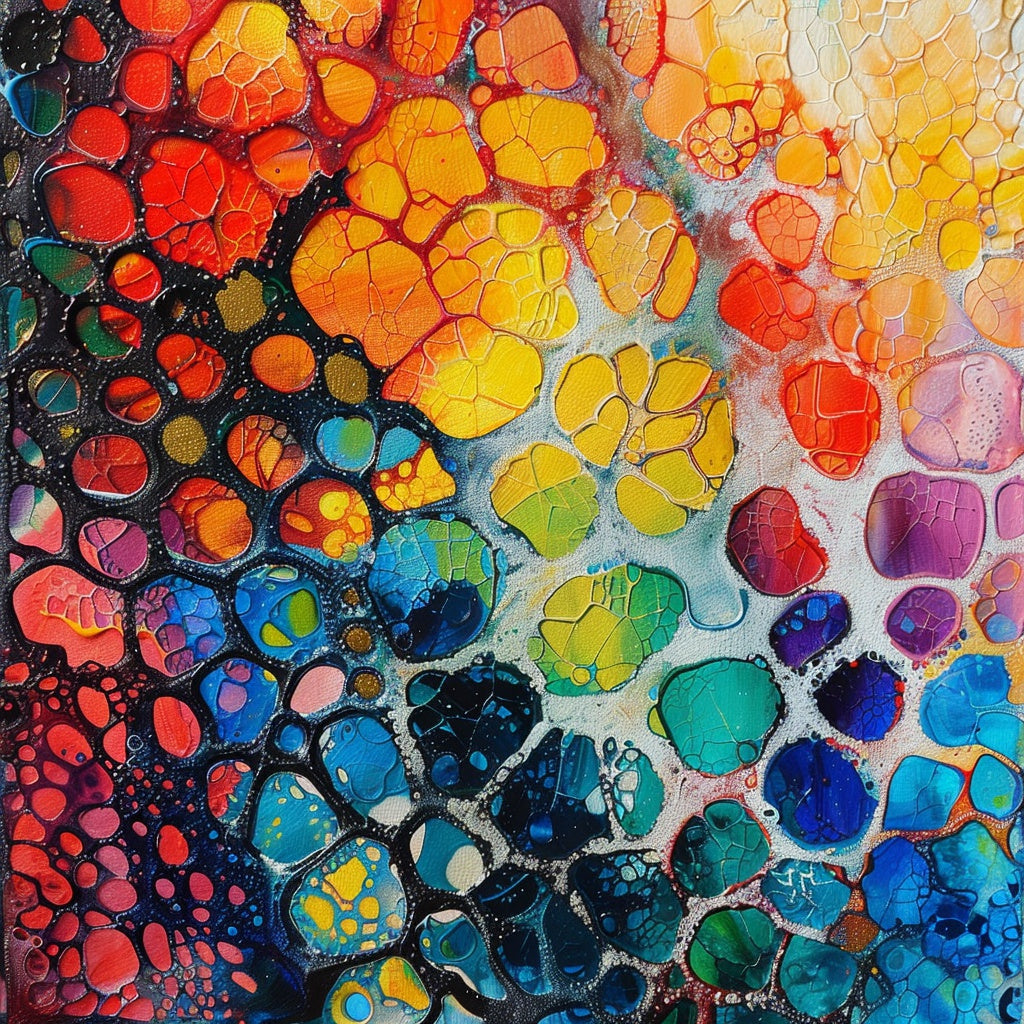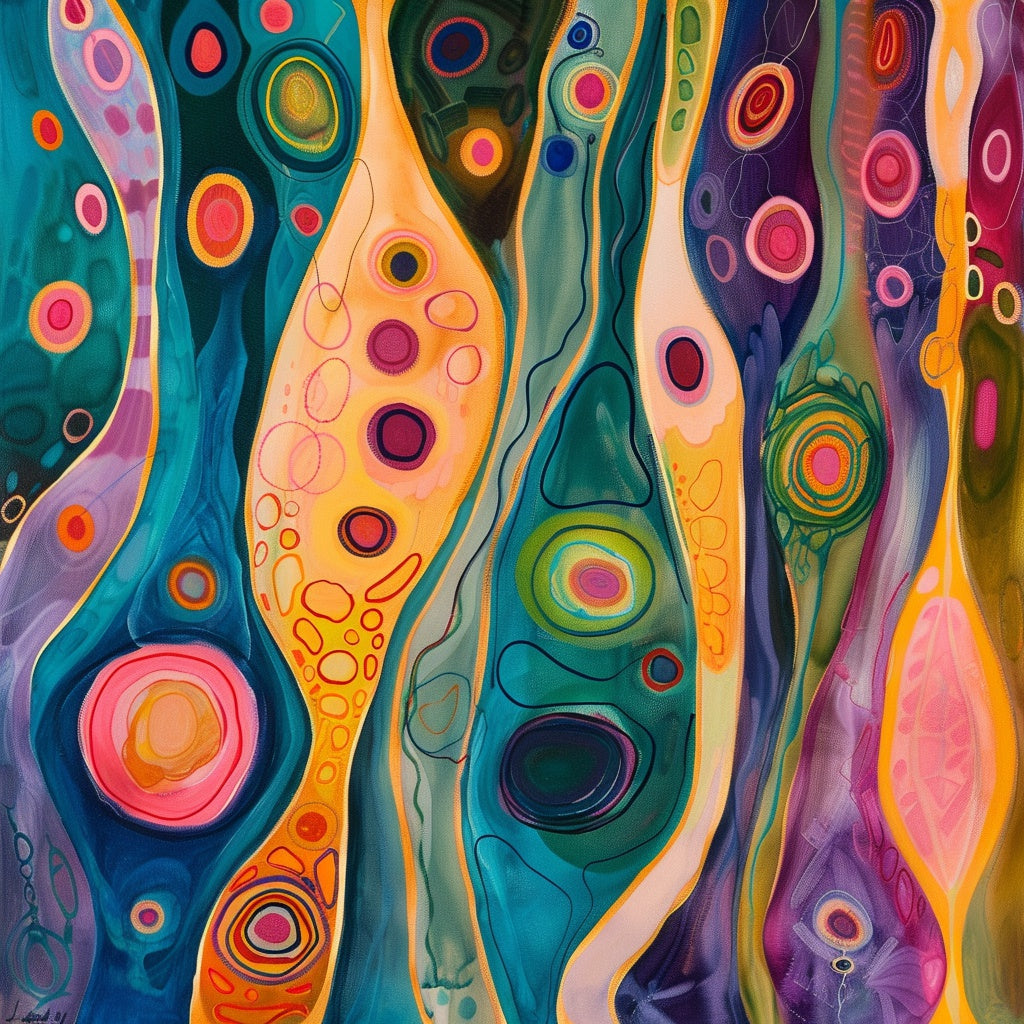The AI Revolution in Art Education: A New Era for Creativity
The art world is experiencing a profound transformation with readily available AI art generation tools. These tools are not just changing how art is created, but also how it's taught and learned. This article explores the exciting potential of AI in art education while also addressing some of the challenges that educators and students face.
Table of Contents
- Potential Benefits of AI in Art Education
- Potential Drawbacks of AI in Art Education
- How AI is Being Used in Art Education and Training
- Impact of AI on Essential Skills for Artists
- AI Art Tools and Platforms
- Conclusion: Navigating the Future of Art Education with AI
Potential Benefits of AI in Art Education
AI is not just a passing fad in the art world; it's a powerful tool that can revolutionize art education. Integrating AI in art education offers several compelling benefits that can enhance the learning experience for students and educators alike. These benefits can be compared to a new set of brushes and paints, allowing artists to explore new techniques and styles.
Enhanced Creativity
AI tools can open up new avenues for artistic expression. By exploring novel styles and techniques, students can generate unique ideas and push the boundaries of their artistic limits. For example, AI art generators can expose students to various art movements and styles, allowing them to experiment with different forms of artistic expression and develop their unique style. Imagine a student who has always been fascinated by impressionism but struggled to grasp its techniques. With AI, they could generate numerous images in that style, study them, and then translate that understanding into their own artwork. This approach is like providing a student with a virtual studio with unlimited resources and inspiration.
Personalized Learning
One of the most significant advantages of AI is its capacity to adapt to individual student needs. AI can create customized learning experiences tailored to different learning styles and skill levels. AI-powered tutoring systems can identify areas where students need additional support and provide personalized instruction and feedback. This is similar to having a personal art tutor who knows your strengths and weaknesses, offering assistance precisely where needed and ensuring every student receives the attention and guidance they need to succeed.
Increased Accessibility
Art education can become more accessible to students with disabilities or those who lack traditional artistic skills through AI. AI can translate instructions into different languages, convert text to speech, or provide alternative ways for students to interact with art materials and create artwork. It's like providing a universal key that unlocks the art world for everyone, regardless of their background or limitations.
Improved Efficiency
AI can automate tasks such as grading and feedback, freeing up educators' time to focus on more creative and interactive aspects of teaching. AI can also assist with administrative tasks, such as generating lesson plans and creating assessments. This automation allows educators to dedicate more time to individual student needs and creative exploration. Just like a well-organized studio where tools are readily available, AI helps teachers manage their responsibilities more effectively to provide more focused and engaging lessons.
Innovation in Art Education
AI can inspire new approaches to teaching and learning art, leading to more engaging and effective educational experiences. AI can create interactive simulations, virtual galleries, and personalized learning paths, transforming how art is taught and learned. It's like opening up a new dimension in art education, where learning is interactive, immersive, and tailored to the digital age.
Potential Drawbacks of AI in Art Education
While the potential benefits of AI in art education are vast, it's also important to consider potential drawbacks. It's crucial to approach the integration of AI thoughtfully to ensure students get the maximum benefits while avoiding negative consequences.
Over-Reliance on AI
One of the major concerns is that students may become overly reliant on AI tools, hindering the development of their own creative skills and critical thinking abilities. Suppose students rely solely on AI to generate ideas or solve artistic problems. In that case, they may miss out on the valuable learning process of experimenting, making mistakes, and developing solutions. Think of learning to ride a bicycle. If training wheels were used forever, balancing would never be learned. Similarly, the overuse of AI might impede the development of skills essential to being an artist.
Diminished Authenticity
AI-generated art may lack the emotional depth and personal expression associated with human-created art, potentially leading to a devaluation of human creativity. While AI can create technically impressive works, it may struggle to capture the nuances of human emotion and experience that often give art its meaning and value. This is similar to the difference between a photograph and a painting. While a photograph may be technically accurate, a painting has the artist's unique touch and emotional expression. This concern is that reliance on AI could diminish the personal connection critical to human expression.
Job Displacement
There are concerns that AI could eventually replace human artists, leading to job losses in the creative industries. As AI becomes more sophisticated, it can perform tasks previously exclusive to human artists, such as creating illustrations, designing graphics, and even composing music. This raises concerns that the creative fields could become oversaturated and that human artists may lose opportunities for AI. This is similar to the rise of automation in other industries, which has caused some jobs to disappear.
Lack of Human Interaction
Over-reliance on AI tools could reduce the quality of human interaction in the classroom, potentially affecting students' social and emotional development. Art education's social and collaborative aspects are essential for students' development, and excessive use of AI could limit opportunities for peer learning and interaction. Think about a band practicing together. The band members' interaction, collaboration, and feedback help them grow and learn as musicians. Similarly, human interaction in an art classroom is critical for personal and artistic development.
How AI is Being Used in Art Education and Training
AI is being integrated into art education in diverse ways, and educators are actively exploring its potential to enhance creativity, personalize learning, and provide new avenues for artistic exploration. Here are some key applications.
Personalized Learning with AI
AI is helping to create personalized learning experiences for students. This is done through AI-powered tutoring systems that adapt to the individual student's learning style and provide personalized feedback. For example, an AI tutor could provide customized exercises and challenges based on students' strengths and weaknesses, helping them progress at their own pace. Additionally, AI can give automated feedback on digital artworks by analyzing elements such as composition, color usage, and style. Students also have access to AI-generated art prompts, which can help spark imagination and encourage thinking outside of the box.
AI for Assessment and Feedback
AI has become a valuable tool for assessment and feedback in art education. AI-assisted grading can help educators grade students' work more efficiently and consistently. While AI may not fully replace human judgment, it can assist with tasks such as assessing technical skills and identifying areas where students need improvement. AI can also be used to create assessment tools, such as generating rubrics and checklists to ensure assessments are objective and aligned with learning objectives.
AI for Accessibility and Support
AI is significantly improving the accessibility of art education through various tools. These include tools that modify text to make it more accessible, such as translating instructions into different languages or converting text to speech. This is especially beneficial for students with diverse learning needs. Additionally, AI can be used to answer tedious student questions and provide tutorials on basic art techniques, freeing up the educator's time.
AI for Exploring Art History and Concepts
AI offers new and exciting ways to explore art history and concepts. Virtual and augmented reality experiences can be used to create immersive art history lessons and virtual galleries, allowing students to interact with art in new ways. For example, students could use VR headsets to explore ancient Egyptian tombs or experience Renaissance paintings in a virtual gallery setting. Also, AI-generated art can be used to explore different artistic styles and abstract concepts more tangibly. Students could use AI to generate images in the style of Cubism or Surrealism, helping them understand the key characteristics of these movements.
AI for Diversifying Instruction
AI can help discover artists and artworks to diversify instruction. This broadens students’ exposure to different artistic styles, cultural perspectives, and historical periods. It enriches their understanding of art and promotes a more inclusive learning environment.
Impact of AI on Essential Skills for Artists
With the rise of AI in art, artists will need to develop new skills to stay relevant in this evolving landscape. While traditional artistic skills will always be crucial, certain competencies will become increasingly important.
AI Literacy
Artists need to understand how AI works, its capabilities and limitations, and how to use AI tools effectively in their creative process. This includes understanding the different types of AI art generators, how to craft effective prompts, and how to evaluate AI-generated content. AI literacy has become as important as computer literacy.
Prompt Engineering
The ability to craft effective prompts for AI art generators will become increasingly important for artists to achieve desired results. This involves understanding the nuances of language, how AI interprets different prompts, and the ability to refine prompts to achieve specific artistic goals. Just like a chef learns how to combine different ingredients to create the perfect dish, artists will need to learn how to combine prompts to get the results they are looking for.
Critical Thinking and Evaluation
Artists must critically evaluate AI-generated content and ensure their work retains authenticity and originality. This involves developing a discerning eye for aesthetics and distinguishing between AI-generated and human-created art. Critical thinking skills will become even more important for artists in an AI-driven art world.
Adaptability and Collaboration
Artists must be adaptable and willing to collaborate with AI as a creative partner, embracing new technologies and workflows. This includes being open to experimenting with AI tools, integrating AI into their creative process, and adapting their skills to the evolving landscape of art and technology. It is important to see AI as a tool, like a new brush or paint, and adapt skills to incorporate AI into the creative process. The willingness to learn and adjust is vital in the ever-evolving world of technology.
AI Art Tools and Platforms
Various AI art tools and platforms are available for students and educators, offering a wide range of features and functionalities. Here's a brief overview of some of the most popular tools, categorized by function.
Text-to-Image Generators
These tools create images from text descriptions. Some popular options include:
- DALL-E 2: Known for creating images from text descriptions.
- Midjourney: Generates images from text prompts within a Discord server.
- Stable Diffusion: Creates realistic and creative images from text descriptions.
- Adobe Firefly: Offers various AI image tools, including text-to-image generation, generative fill, and recoloring.
- Canva AI: A text-to-image AI generator integrated with the Canva design program.
Image Transformation and Style Transfer Tools
These tools transform images using neural style transfer or other AI techniques. One example is:
- NightCafe Creator: Uses neural style transfer to transform photos into artworks and offers text-to-image generation.
Image Manipulation and Creation Tools
These tools allow users to manipulate and evolve images.
- Artbreeder: Allows users to generate, mix, and evolve images to create unique digital art pieces.
Machine Learning and Creative Tools
These platforms provide access to pre-trained machine-learning models for various creative tasks.
- RunwayML: Provides access to pre-trained machine learning models for image and video processing, audio synthesis, and more.
Other AI Tools for Artists
Other tools that use AI technology in various ways for artists include:
- Google Quick, Draw!: A game-like tool that uses AI to recognize drawings.
- Sketch2Code: Transforms hand-drawn sketches into HTML code.
Conclusion: Navigating the Future of Art Education with AI
The integration of AI into art education presents both incredible opportunities and potential challenges. AI can potentially transform how art is created, taught, and understood. By embracing a thoughtful approach, art education can harness the power of AI to foster creativity and promote inclusivity. It's important to remember that AI is a tool that can enhance human creativity rather than replace it. The key to navigating this new era is balancing embracing new technologies and preserving the core values of art education.
Educators and institutions need to carefully consider how AI can be integrated into curricula responsibly and effectively, promoting AI literacy, fostering human-AI collaboration, and maintaining a balance between traditional artistic skills and new technological competencies. AI has the potential to democratize art creation, making it more accessible to a wider range of people. By guiding students to use AI responsibly and ethically, they can be empowered to explore their artistic potential in new ways. The future of art education with AI will depend on how well we navigate these challenges and opportunities.
Footnotes
1. Artificial Intelligence and AI Art's Impact on Art Education and Machine Learning - Airbrush, accessed February 8, 2025, https://www.airbrush.ai/blog/ai-arts-impact-on-art-education-machine-learning
2. Art and AI Workshop - MIT RAISE, accessed February 8, 2025, https://raise.mit.edu/art-and-ai-workshop/
3. NAEA Position Statement on Use of Artificial Intelligence (AI) and AI-generated Imagery in Visual Arts Education, accessed February 8, 2025, https://www.arteducators.org/advocacy-policy/articles/1303-naea-position-statement-on-use-of-artificial-intelligence-ai-and-ai-generated-imagery-in-visual-arts-education
4. Ways AI Can Make Your Art Teacher Job Easier for Planning and Assessment, accessed February 8, 2025, https://theartofeducation.edu/2024/07/june-new-tools-every-art-teacher-needs-to-know-about-the-promise-and-peril-of-ai/
5. The Pros and Cons of Using AI for Writing, Art, or Business | by Gini Graham Scott | Medium, accessed February 8, 2025, https://ginigrahamscott.medium.com/the-pros-and-cons-of-using-ai-for-writing-art-or-business-e086b795a9d0
6. AI Art: Exploring the Pros, Cons, and Ethical Dimensions - Vision Factory, accessed February 8, 2025, https://www.visionfactory.org/post/ai-art-exploring-the-pros-cons-and-ethical-dimensions
7. 5 Pros and Cons of AI in the Education Sector | Walden University, accessed February 8, 2025, https://www.waldenu.edu/programs/education/resource/five-pros-and-cons-of-ai-in-the-education-sector
8. The Ethical Implications of AI on Creative Professionals | by Dirk Steynberg - Medium, accessed February 8, 2025, https://bytemedirk.medium.com/the-ethical-implications-of-ai-on-creative-professionals-38ec6ed983e2
9. Ethical Implications of AI in Creative Industries | by Daisy Thomas - Medium, accessed February 8, 2025, https://medium.com/aimonks/ethical-implications-of-ai-in-creative-industries-9b9174dd21e0
10. Advantages and disadvantages of AI in education | University in Vancouver, accessed February 8, 2025, https://www.ucanwest.ca/blog/education-careers-tips/advantages-and-disadvantages-of-ai-in-education
11. Machine Learning: AI and art education - The Cypress, accessed February 8, 2025, https://thecypressonline.com/55462/arts/machine-learning-ai-and-art-education/
12. The Influence of AI in the Art World, accessed February 8, 2025, https://art.art/blog/the-influence-of-ai-in-the-art-world
13. AI-Generated Art: How Can Visual Artists Navigate This New Frontier of Creativity?, accessed February 8, 2025, https://artmarketingnews.com/ai-generated-art/
14. Art and AI: Educators must find ways to ease students' fears | LASALLE College of the Arts, accessed February 8, 2025, https://www.lasalle.edu.sg/news/art-and-ai-educators-must-find-ways-ease-students-fears
15. Using AI Tools to Create Art - AI Tools for Students - Research Guides - LibGuides, accessed February 8, 2025, https://uvu.libguides.com/ai-tools-students/art
16. 10 Free AI Image Generators for Classroom Uses - Ditch That Textbook, accessed February 8, 2025, https://ditchthattextbook.com/ai-image-generators/
17. 15 Essential A.I Tools for Artists, Case Study, and Reviews, accessed February 8, 2025, https://learnmycraft.com/15-essential-a-i-tools-for-artists/



Leave a comment (all fields required)